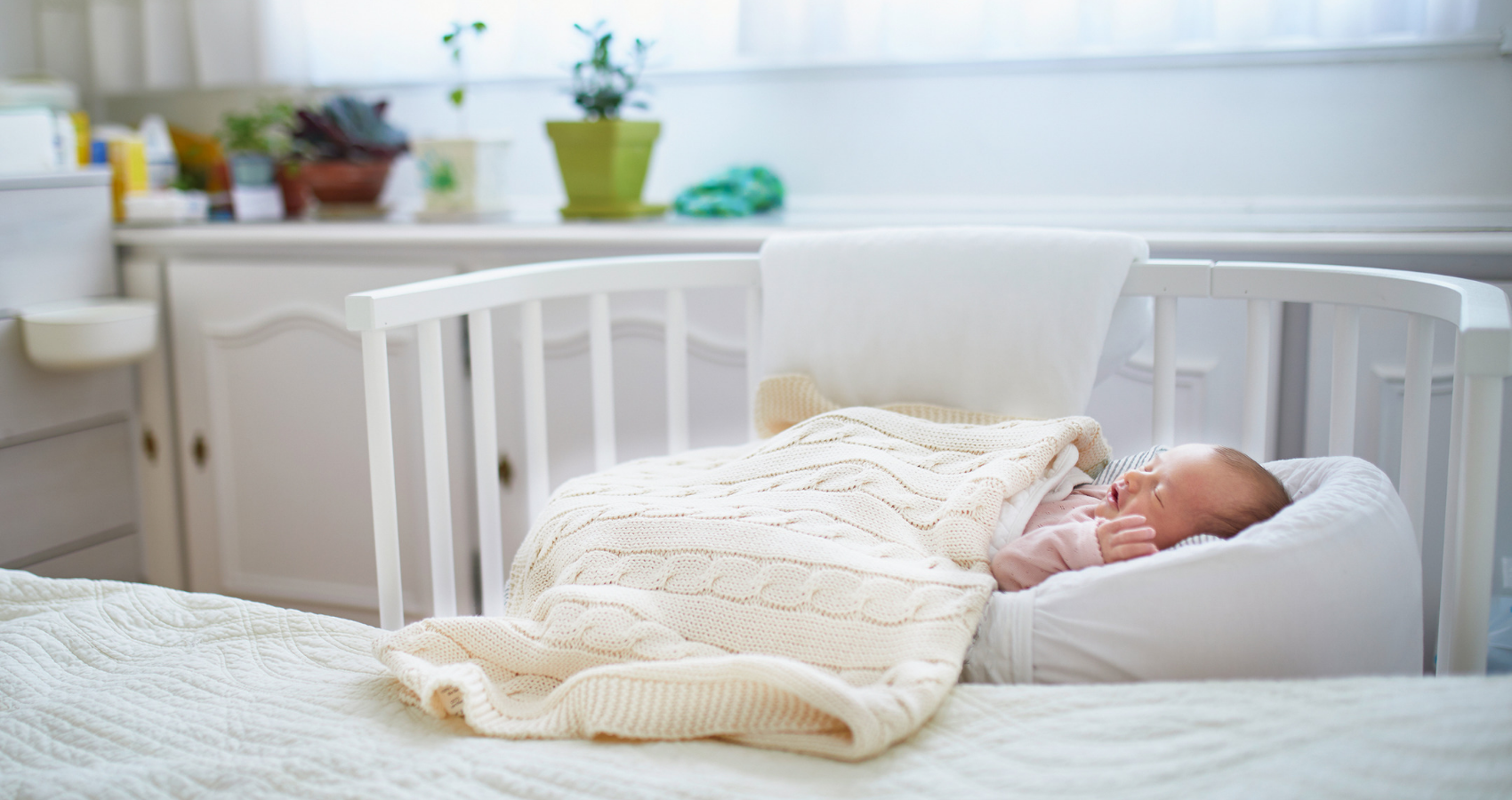When you bring your baby home from the hospital, one of the hardest decisions parents face is where the baby will sleep. They do sleep, we promise! But a lot of parents are unsure if they should be co-sleeping, and when exactly they should transition the baby to their own room. Here's what you need to know about where your baby should be sleeping and for how long.
What Science Says About Room Co-Sleeping
According to the American Academy of Pediatrics, your baby should sleep in a bassinet or crib in your room for the first 12 months of their life. Being in your room while they're sleeping can lower the risk of SIDS by as much as 50%, and allow you to keep a closer eye on them in those crucial early months. The AAP, when giving their room co-sleeping recommendation, reiterated the importance of other safe-sleep practices, like placing your baby on their back to sleep, and keeping their crib or bassinet free of soft bedding, pillows, and crib bumpers.
But a more recent study published in the journal Pediatrics questions the 12-month recommendation. Researchers acknowledge that room co-sleeping is important, but concluded that babies who sleep in their parents' room between the ages of 4-9 months actually sleep less - they get less nighttime sleep, and sleep for shorter periods of time. Additionally, they have more unsafe sleep practices than babies who slept in their rooms at those ages. The one year recommendation is focused on decreasing the risk of SIDS, while the 6-month recommendation is focused on better sleep and sleep patterns.
So a middle ground might be what works best for a lot of families! Keep your baby in your room for the first 6 months, then transition them to their own rooms, and start using a high-quality baby monitor. If you don't have a good monitor, keep them in your room for the full year.
How To Make Co-Sleeping Work
One of the problems a lot of parents face when trying to make room co-sleeping work is space - they just don't have room in their room for a crib! Most cradles and bassinets have a weight limit, which means babies age out of them around 4 months old; also, once your baby can roll over, they shouldn't be sleeping in a bassinet or cradle.
Before buying a crib, consider where the crib will be in your home for the first 6-12 months. Full-size cribs are on the larger side, so look for a more compact crib that can fit in smaller spaces, like next to your bed or at the foot of your bed. It may take some reorganizing or redecorating in your room to make it fit (many parents end up taking out one or two pieces of furniture, like nightstands or chairs). Mini cribs are more narrow, and about a foot shorter, but still adhere to the same safety standards as standard, full-size cribs.
Myths About Room Co-Sleeping
There are a lot of myths and half-truths out there about co-sleeping, which can turn a lot of parents off to the idea. But when it comes to the safety of your new little one, it's important to have all the necessary information when making such an important decision.
-Myth: Co-sleeping automatically means bed-sharing.
Not true! As we've already explained, co-sleeping can mean sharing your room with your baby, not your bed. There are many documented risks associated with bed-sharing, particularly for very young infants. But you can easily share your room, and not your bed.
-Myth: Co-sleeping will make your baby clingy.
Also not true! Co-sleeping, when done safely and correctly, can actually help your baby grow up with more confidence and self-esteem, and even help them become more independent sooner than if they slept in a different room.
-Myth: Co-sleeping will wreck your relationship with your partner.
The truth is, most couples' relationships change drastically once they have a child. You have to get more creative and intentional about finding time to spend together, and this goes for co-sleeping parents, too. You certainly don't need to stop being intimate with your partner - you just need to get a bit more creative about finding those moments.
When It's Time To Transition
If you have a high-quality baby monitor, you can start transitioning your baby into their own room when they're around 6 months old, if you feel comfortable doing so. But truthfully, when it's time to transition will look different for every family. When you do decide to start making the switch, do it gradually. Start with putting your baby to sleep in their own room during naps, then after they're comfortable with that, move to nighttime sleep. For the first few nights, you might consider sleeping in the room with your baby as they get used to their new surroundings and begin to feel secure.
READ NEXT: 15 Ways For Moms To Make The Baby Sleep Longer (And 5 Doctors Don’t Recommend)

